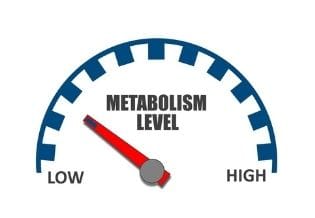Aims & Scope
Journal of Glycomics and Metabolism (JGM) publishes molecular-level research on glycan structures, biosynthetic pathways, metabolic regulation, and glycoprotein mechanisms that advance fundamental understanding of cellular glycosylation and metabolic processes.
Core Research Domains
Tier 1: Priority FocusGlycan Structure & Biosynthesis
- Glycan structural characterization and sequencing
- Glycosyltransferase mechanisms and substrate specificity
- Biosynthetic pathway regulation and gene expression
- N-glycan and O-glycan assembly mechanisms
- Golgi apparatus trafficking and glycan processing
- Glycan branching and elongation pathways
"Structural analysis of fucosyltransferase substrate recognition reveals molecular determinants of Lewis antigen biosynthesis through crystallographic and kinetic studies."
Glycoprotein Folding & Quality Control
- Glycoprotein folding pathways in the endoplasmic reticulum
- Lectin chaperone interactions and recognition mechanisms
- ER-associated degradation (ERAD) of misfolded glycoproteins
- Glycan-dependent protein stability and trafficking
- Unfolded protein response and glycosylation stress
- Glycoprotein quality control checkpoints
"Calnexin-glycoprotein binding kinetics demonstrate how N-glycan trimming regulates ER retention and folding cycles of nascent glycoproteins."
Metabolic Pathway Regulation
- Carbohydrate metabolism and glycolytic flux control
- Lipid biosynthesis and fatty acid metabolism
- Amino acid metabolic pathways and nitrogen cycling
- Nucleotide sugar metabolism and glycan precursor synthesis
- Metabolic enzyme kinetics and allosteric regulation
- Metabolic flux analysis and pathway modeling
"Isotope tracing reveals UDP-GlcNAc biosynthesis flux is regulated by hexosamine pathway enzyme phosphorylation in response to glucose availability."
Glycan-Protein Interactions
- Lectin-glycan binding specificity and affinity
- Glycan recognition domain structures and mechanisms
- Carbohydrate-binding protein evolution
- Glycan array screening and binding profiling
- Structural basis of glycan-mediated protein interactions
- Glycosaminoglycan-protein complex formation
"X-ray crystallography of galectin-3 complexed with branched N-glycans reveals multivalent binding mechanisms that modulate protein oligomerization."
Secondary Focus Areas
Tier 2: Cross-Disciplinary ResearchAnalytical Methods & Technologies
- Mass spectrometry for glycan and metabolite profiling
- NMR spectroscopy of carbohydrate structures
- HPLC, LC-MS, and GC-MS method development
- Glycan microarray and high-throughput screening
- Metabolomics and lipidomics workflows
Synthetic & Engineering Approaches
- Glycoengineering and synthetic glycobiology
- Metabolic engineering for pathway optimization
- Chemoenzymatic glycan synthesis
- Recombinant glycoprotein production systems
- Glycosidase and glycosyltransferase engineering
Computational & Systems Biology
- Glycoinformatics and database development
- Metabolic network modeling and simulation
- Machine learning for glycan structure prediction
- Systems-level analysis of glycosylation networks
- Bioinformatics tools for glycomics data
Molecular Disease Mechanisms
- Glycosylation defects at molecular level (CDG mechanisms)
- Metabolic enzyme deficiencies and pathway disruption
- Glycan alterations in cellular transformation
- Molecular basis of glycan-related disorders
- Protein misfolding diseases involving glycosylation
Emerging Research Areas
Tier 3: Selective ConsiderationMicrobiome Glycan Metabolism
- Microbial glycan degradation enzyme mechanisms
- Host-microbe glycan metabolic interactions
- Bacterial glycosidase structural biology
- Glycan utilization pathway genetics
Glycan-Mediated Cell Signaling
- Glycan receptor signaling mechanisms
- O-GlcNAc modification in signal transduction
- Glycolipid signaling pathway regulation
- Glycan-dependent receptor activation
Glycan Nanotechnology
- Glycan-functionalized nanoparticle design
- Carbohydrate-based biomaterial synthesis
- Glycan-mediated molecular targeting mechanisms
- Nanoscale glycan presentation and recognition
Developmental Glycobiology
- Glycosylation changes during cell differentiation
- Stem cell glycan expression patterns
- Glycan biosynthesis in developmental stages
- Metabolic reprogramming during development
Article Types & Editorial Priorities
These article types are only considered when they present exceptional molecular insights or methodological innovations with broad applicability to glycomics and metabolism research.
Editorial Standards & Requirements
Reporting Guidelines
MIRAGE (glycomics), STROBE (observational), ARRIVE (animal studies), MIQE (qPCR)
Data Availability
Raw data deposition required in public repositories (GlycoPost, MetaboLights, PDB, UniCarbKB)
Ethics Compliance
IRB/IACUC approval required for human/animal studies; ethics statement mandatory
Reproducibility
Detailed methods, reagent identifiers (RRID), statistical analysis code sharing encouraged
Preprint Policy
Preprints welcomed; does not affect consideration for publication
Peer Review
Single-blind peer review; minimum 2 expert reviewers per manuscript
Publication Metrics
Ready to Submit Your Research?
If your work advances molecular understanding of glycosylation or metabolic pathways through mechanistic investigation, we invite your submission.


